Trabocchi
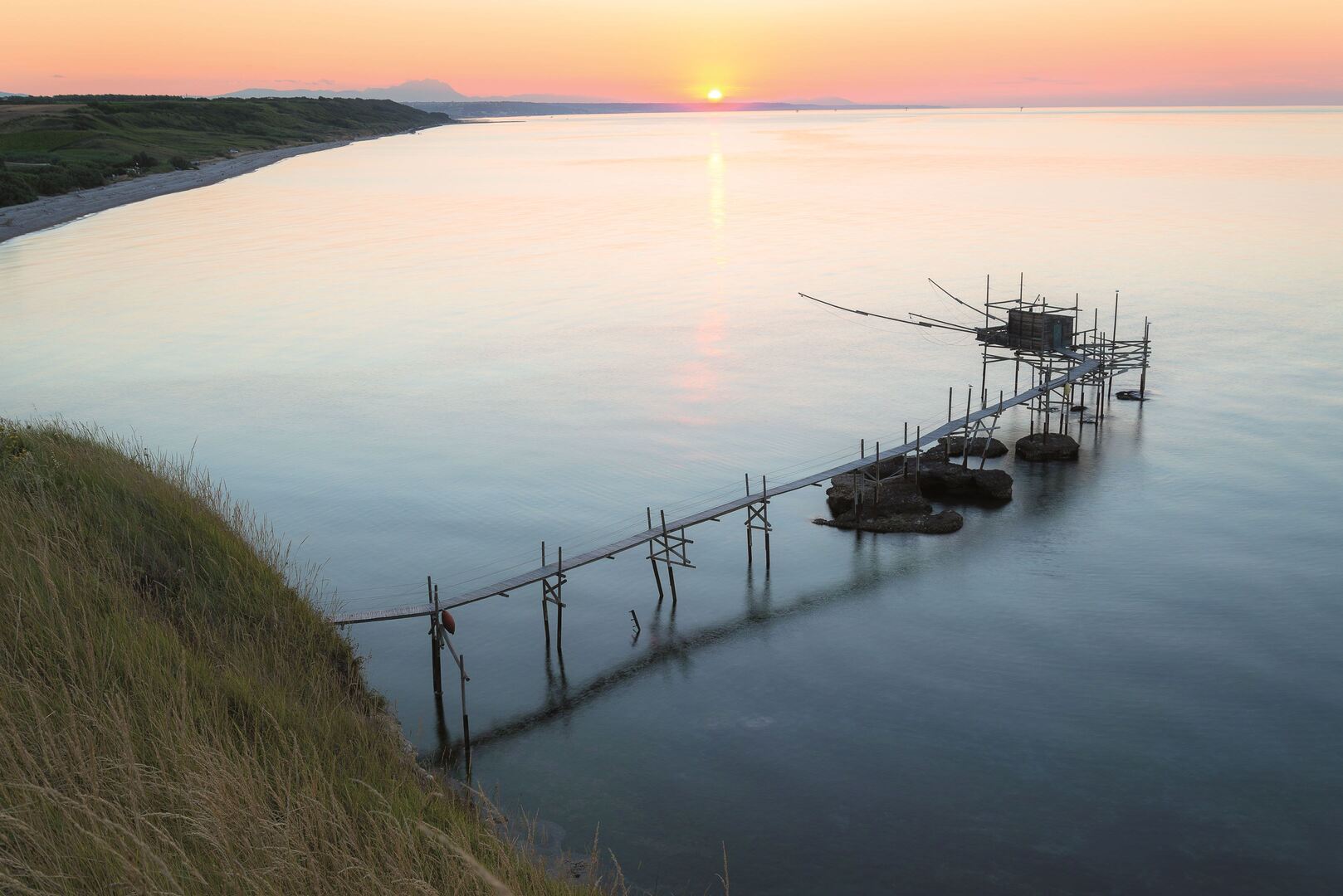
Trabocchi, or travocche, in local dialect, are very unusual, ingenious machines for shoreline fishing, consisting of a stilt platform that extends out to sea and allows a large square net to be dropped while the fisherman stay high above the water.
Found in various points along the Adriatic coast, from Chioggia to Gargano, there are a large number on the Abruzzo shore, they are quite densely concentrated above all from Ortona to the Molise region.

They are spontaneous architectures so always make the most of environmental characteristics, but they also express a well-observed application of the flexible support methods of cable-stayed structures.
Indeed, the base platform is an elementary, primitive stilt house, while the winch for hauling the net and the poles to reinforce and support it come directly from the culture of cable-stayed superstructures for building sailing ships.
The trabocco is still a spellbinding element that characterizes the Chieti provincial shoreline and local history too.
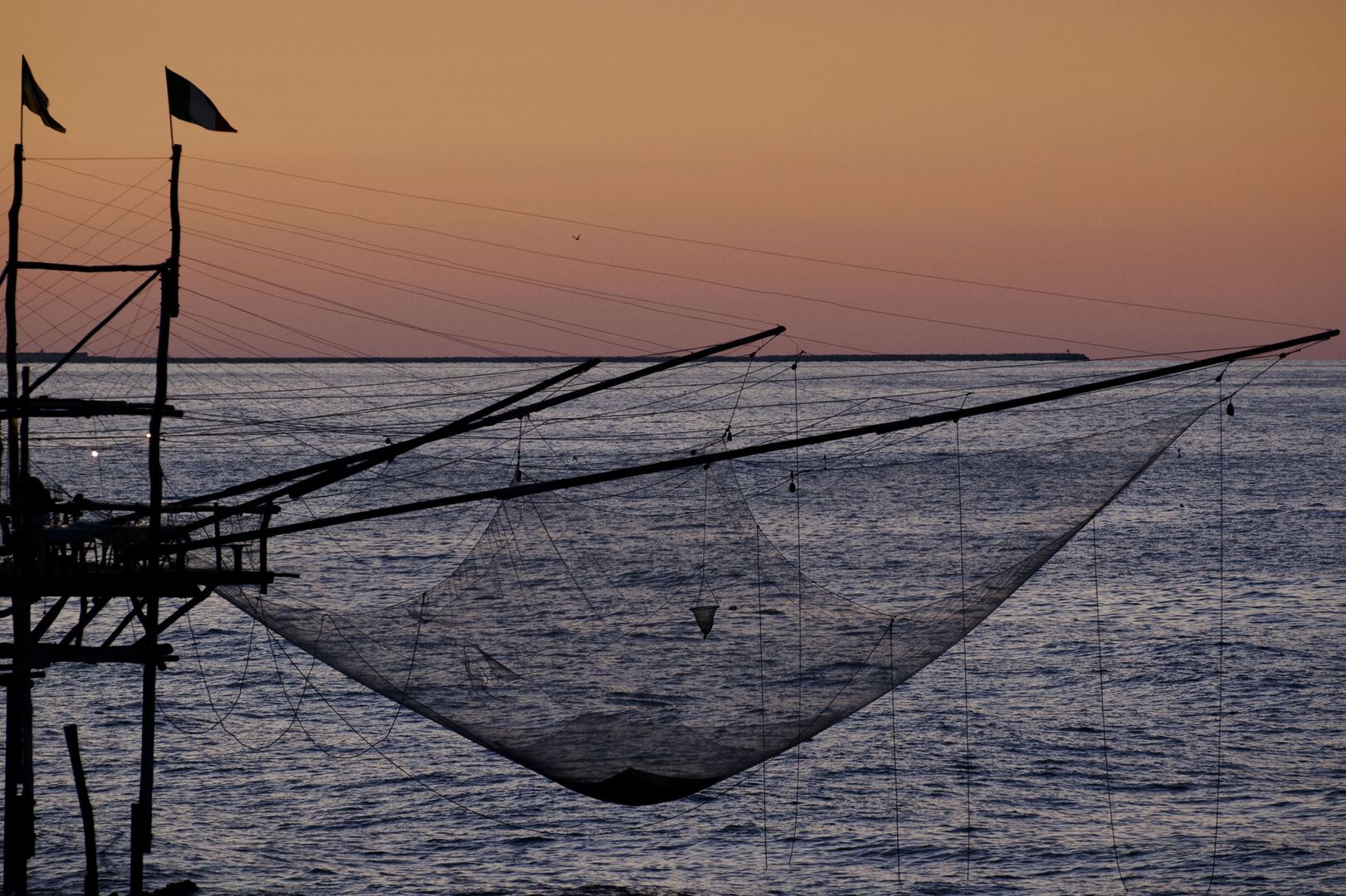
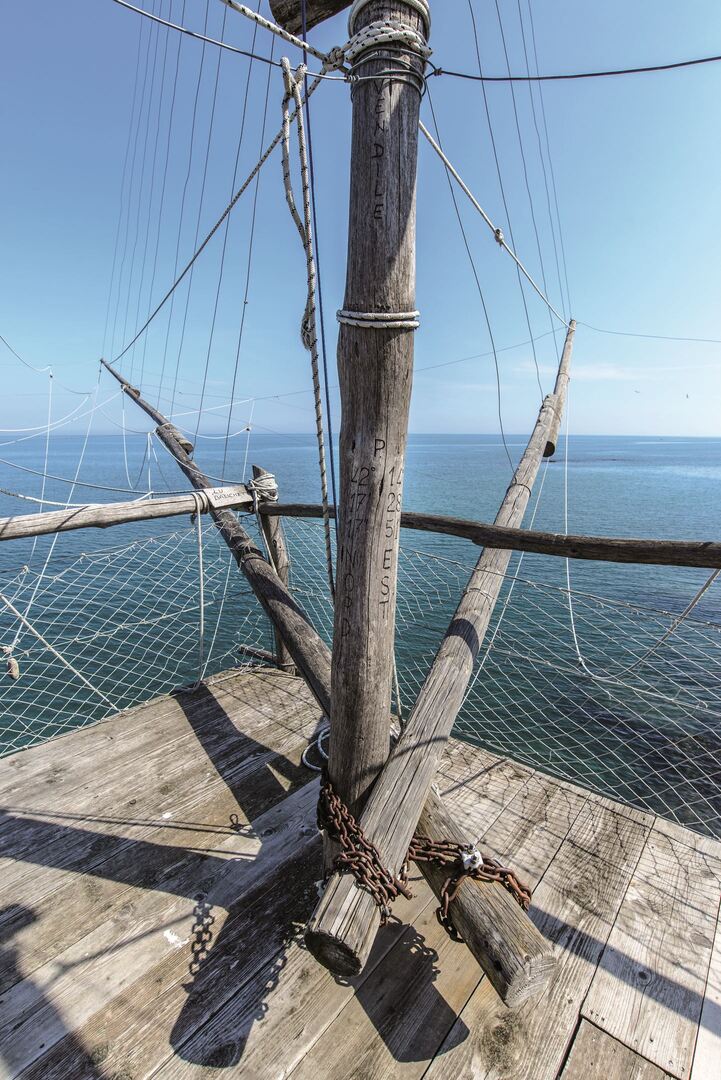
The oldest document to mention a trabocco is the manuscript Vita Sanctissimi Petri Celestini. written in the latter half of the fifteenth century by a Celestinian father, who tells that when Pietro da Morrone stayed at the abbey of San Giovanni in Venere in Fossacesia (1240–3), he often went out to the belvedere hillside to admire the sea below “dotted with trabocchi”.
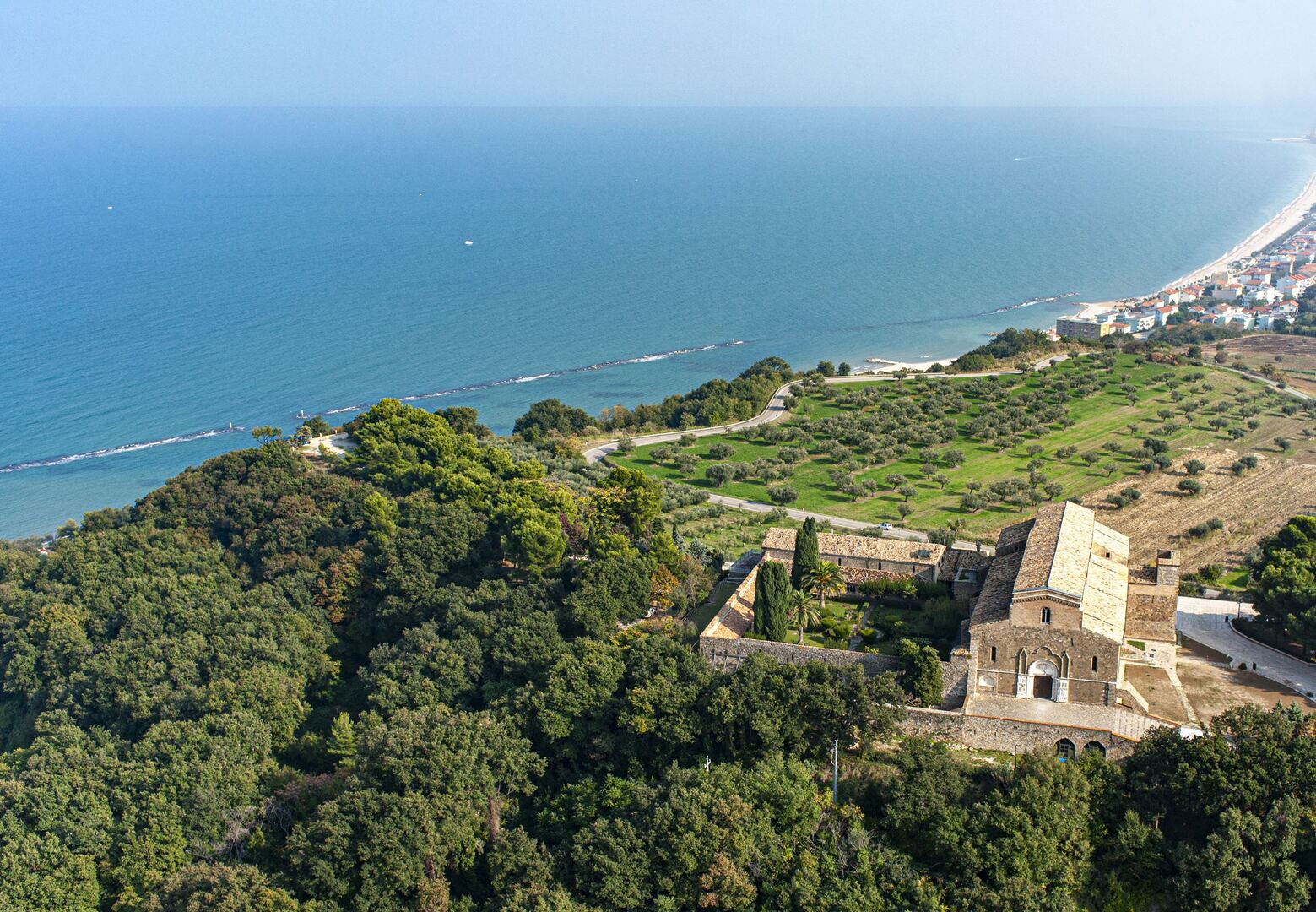
During these operations, settlers were employed: some were immigrants from Dalmatia and others had already settled in the sparsely inhabited area a few decades before, many of them exiles from antisemitic persecution that occurred in northern Europe. They came mainly from France (the Verì family) and Germany (the Annecchini family), and were skilled artisans, especially the Verì, who were expert carpenters in the construction of walkways suitable for river crossings, but who also grew and processed hemp and flax, moreover they are said to have introduced the cultivation of oranges (typical of the area and known as purtihalle, including the fragrant cetrangolo).

The techniques gradually became more sophisticated , from the use of long spears used while standing on the platforms, to gillnets that were placed between the rocks and collected using makeshift rafts constructed with reeds (lu cannizzero ), until they gradually improved. the structures by making them evolve with the use of outrigger nets hoisted by a winch (lu voddavie ) placed in the centre of the deck.
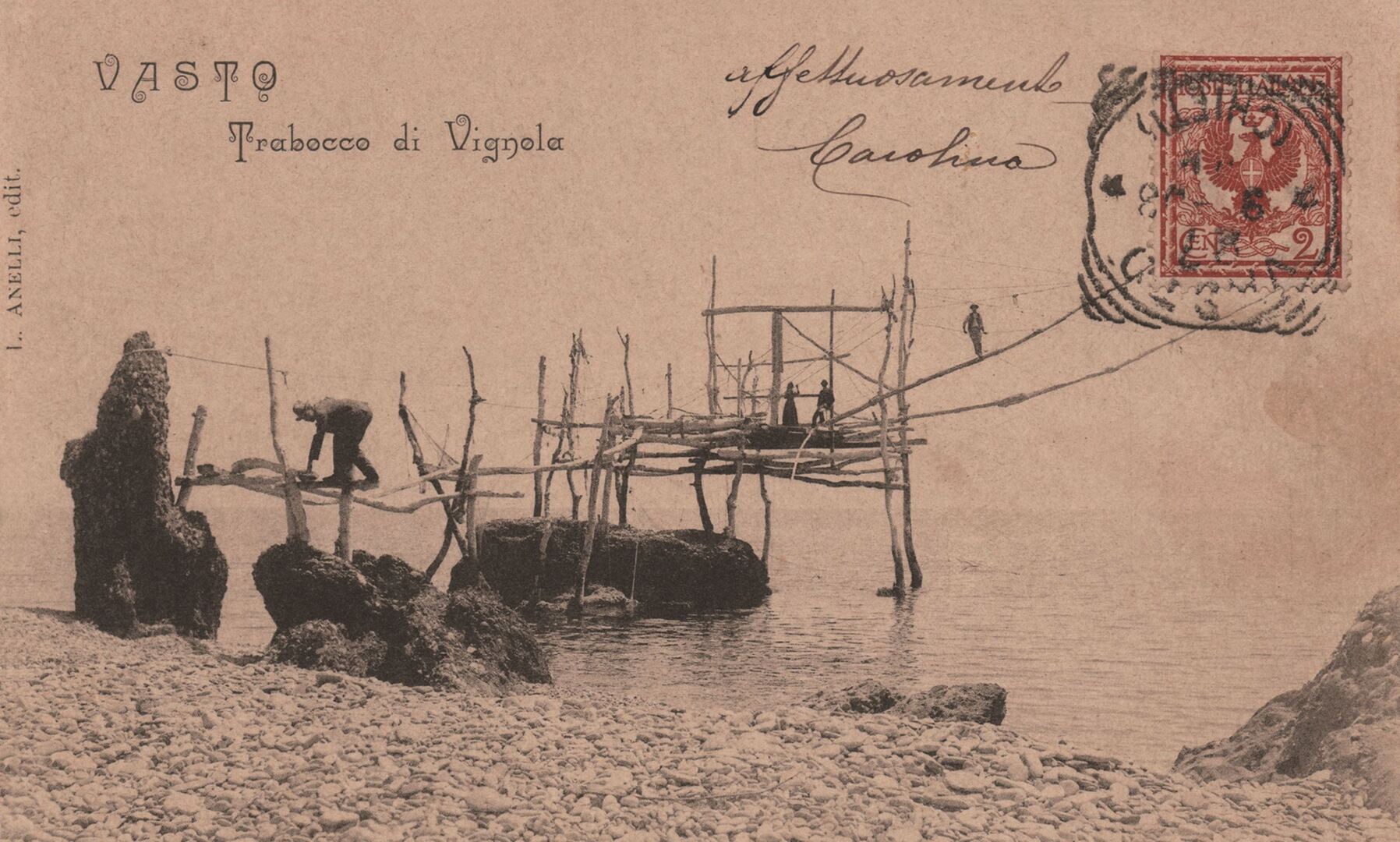
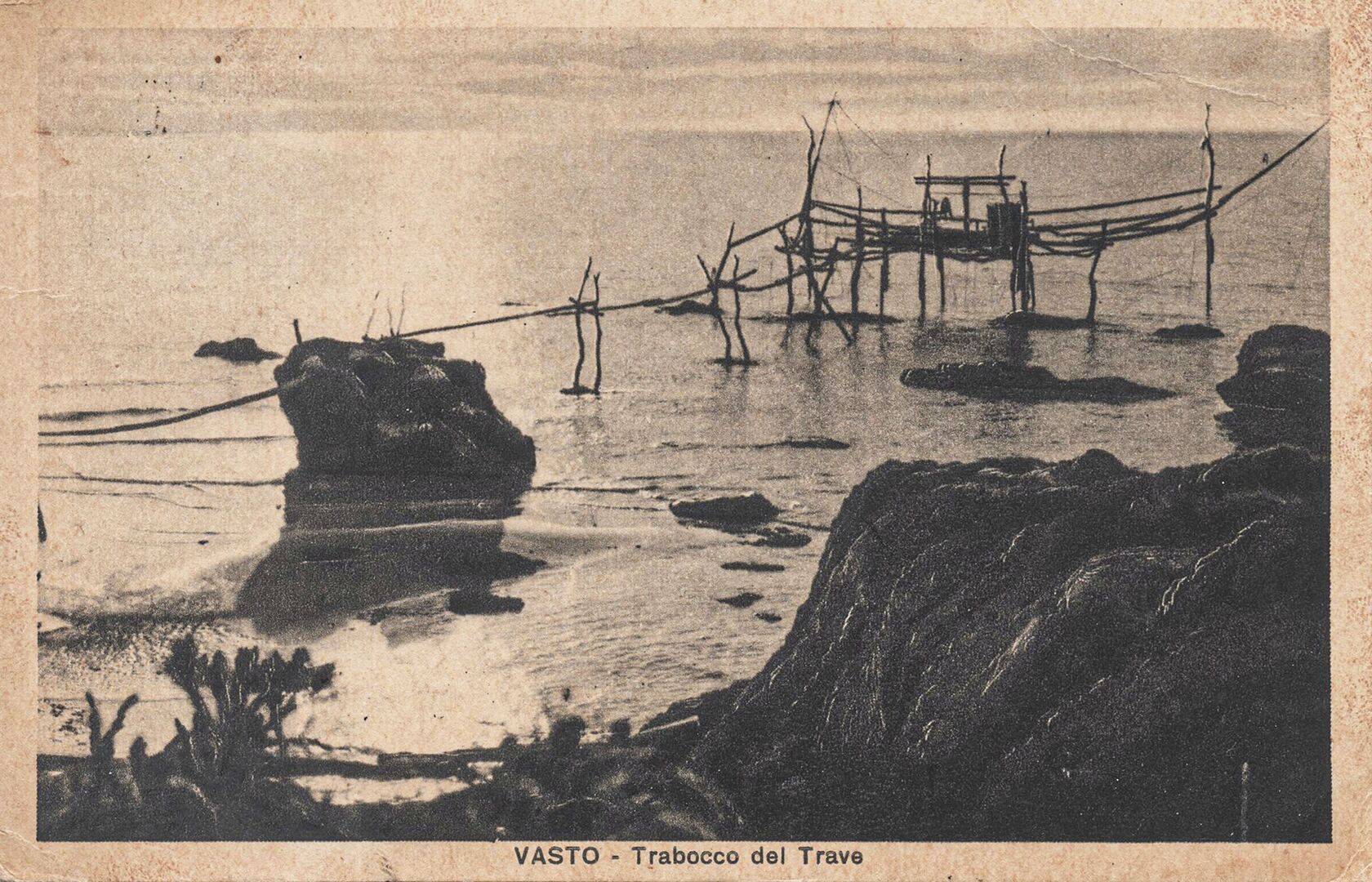
The trabocco at the Rubbanhille rock was probably the first built by the Verì, in 1777, followed by others that were increasingly more advanced; the “Rubbanhille”, namely the “Reubenites” were the Jews from the tribe of Ruben.
With the arrival of the railway in 1862–3, new materials became available in the area and these radically changed the structure of the trabocco.
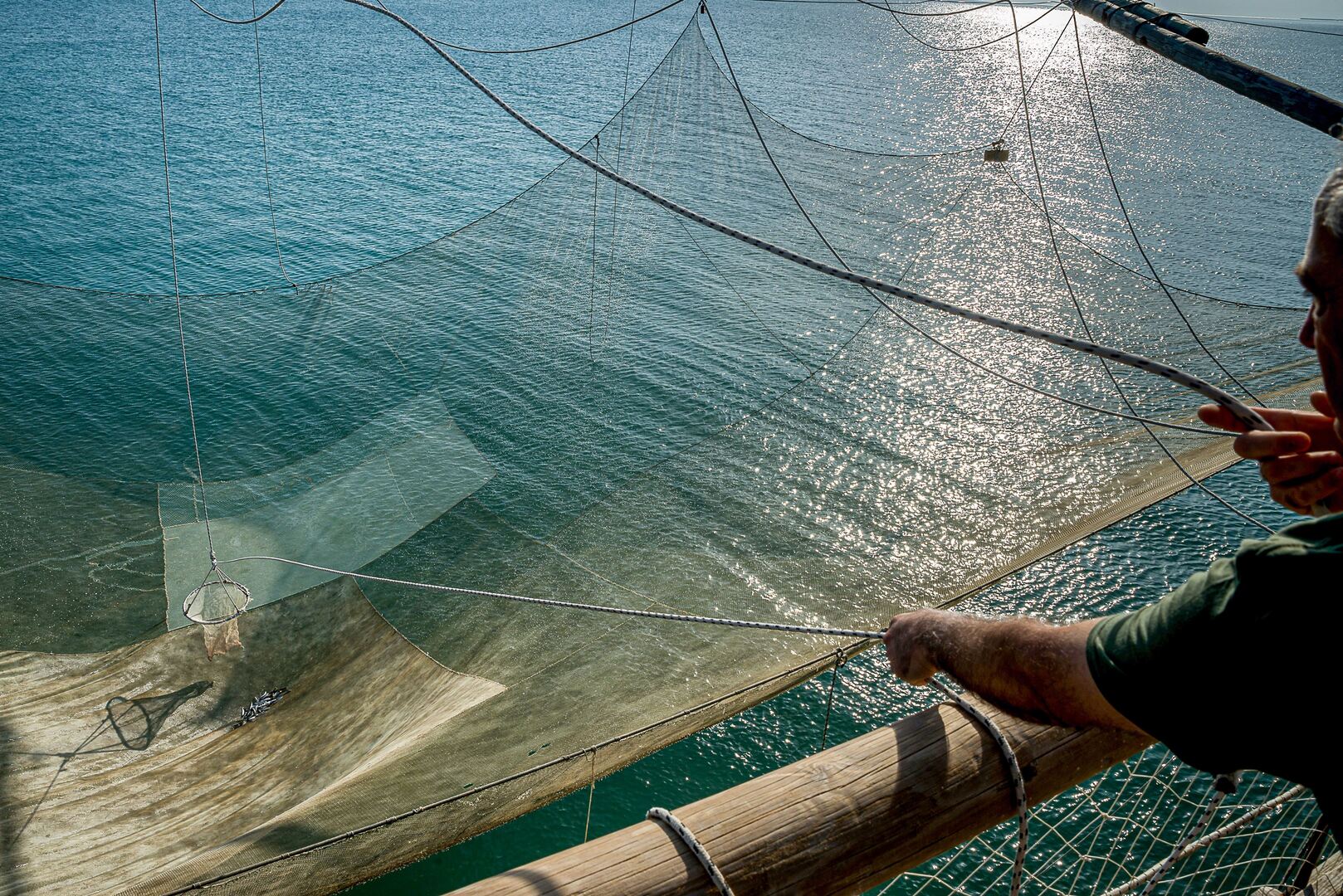
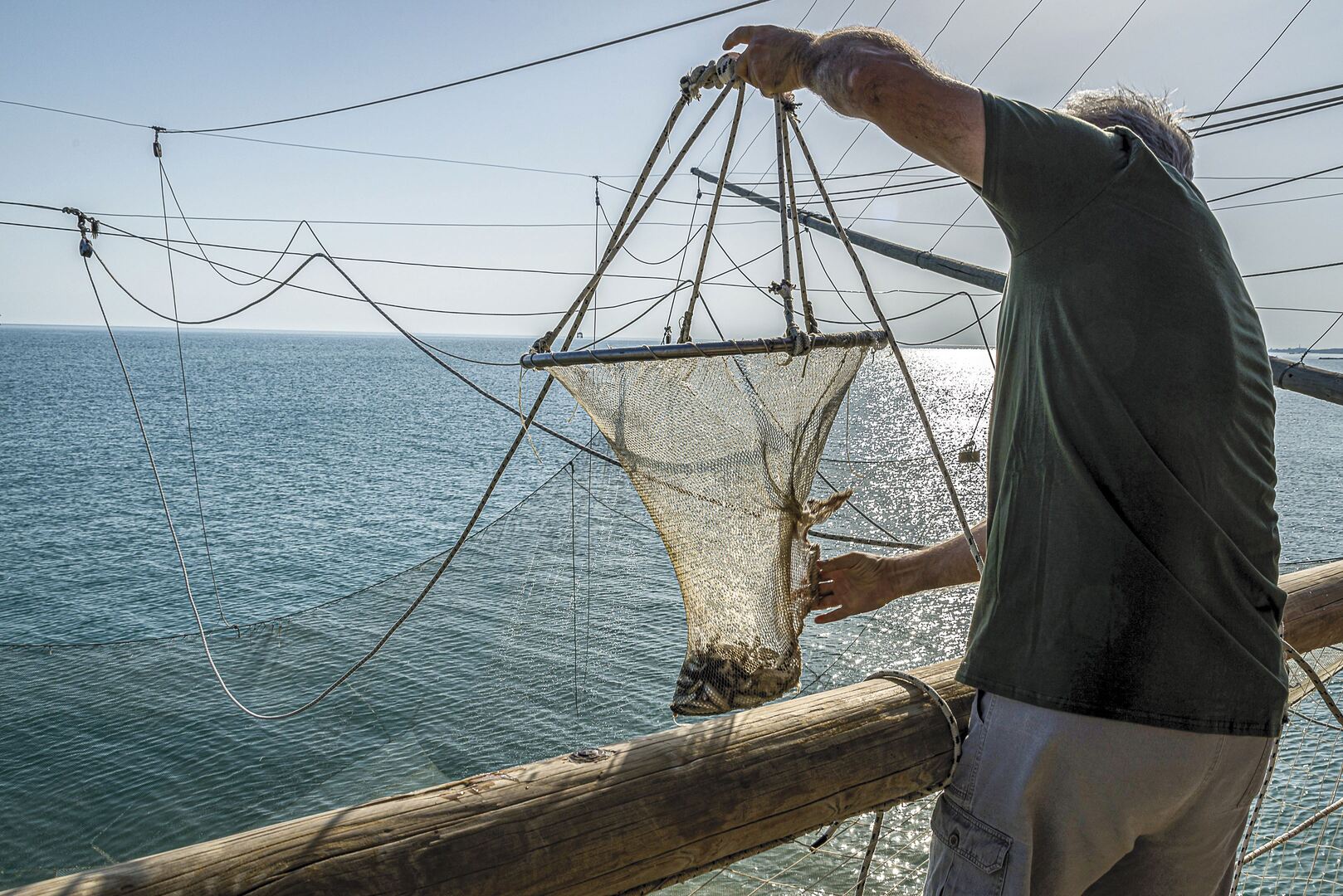
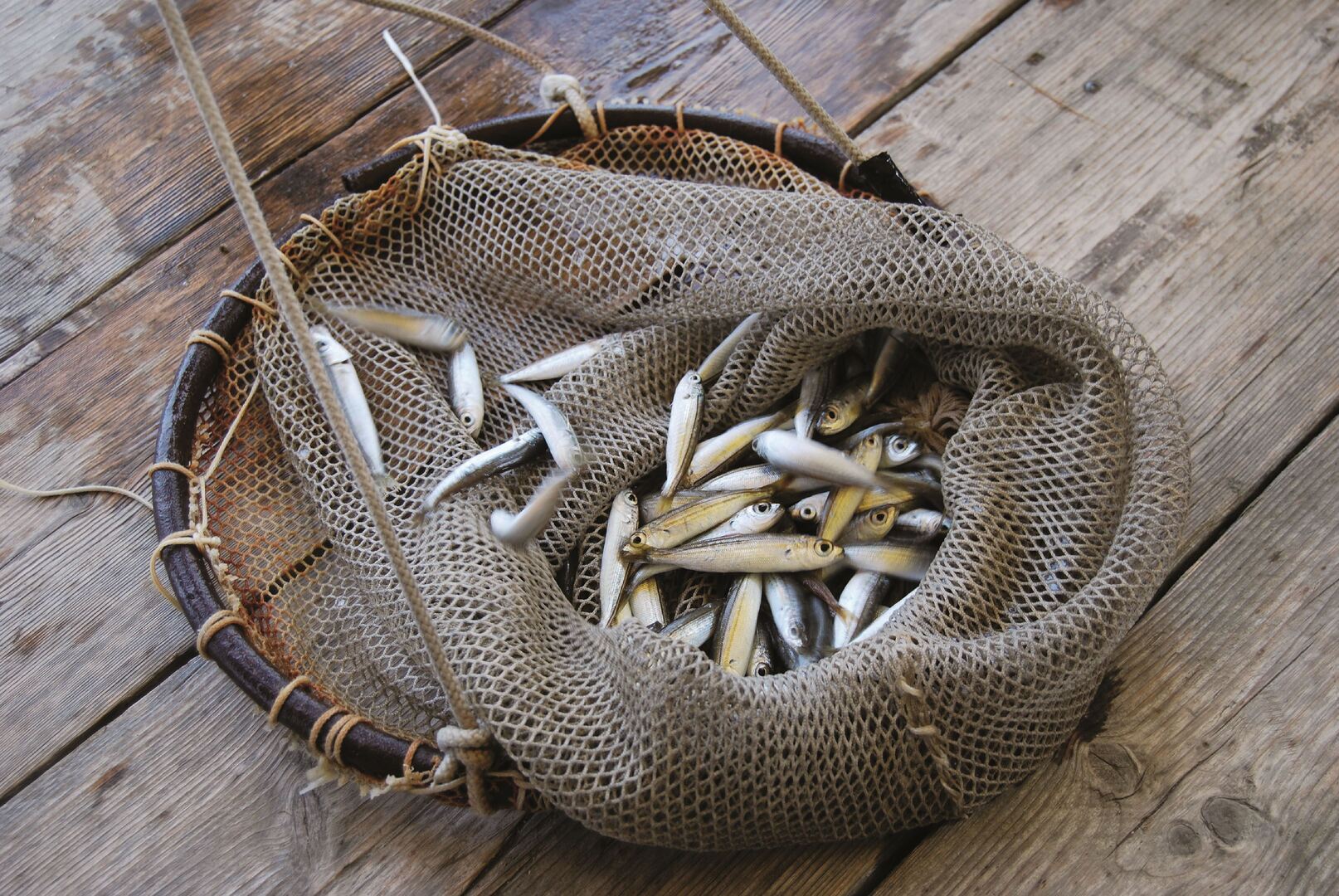
The introduction of wire was also decisive, which made it possible to create more resistant tie rods, making the structure more daring and the components narrower. The subsequent renovation of the railway after Second World War bomb damage made sections of iron tracks available and they were used to replace the wooden poles driven into the water.
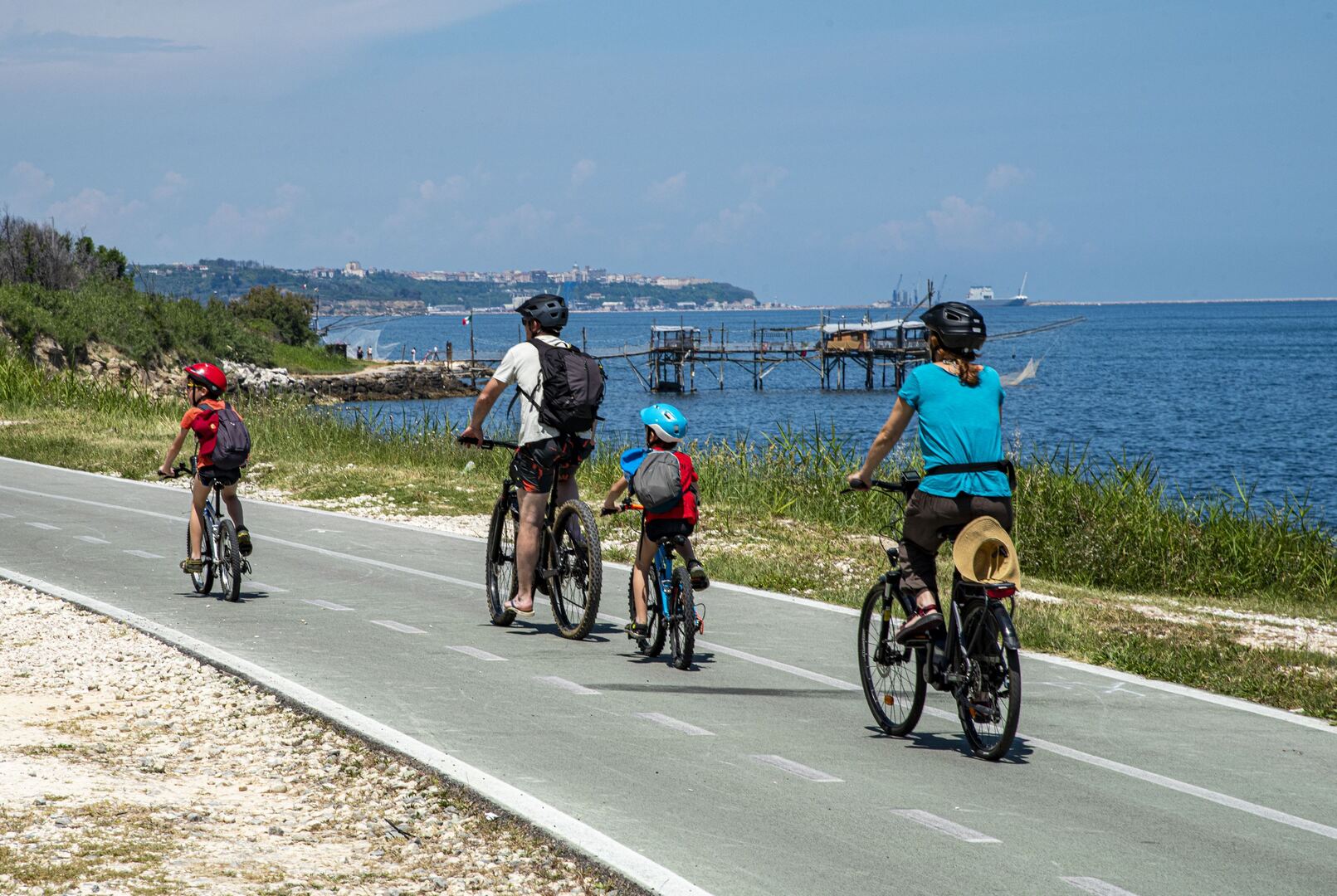
Now, with a significant reduction in the amount of fish found along the coast because the industrial fishing methods in use, the trabocco has once again changed its intended use, adapting to the shifting needs of the times and is now used mainly for restaurant service.
The platform set on stilts was enlarged to accommodate dining tables, and the small initial tool and winch shed became a kitchen of an appropriate size.
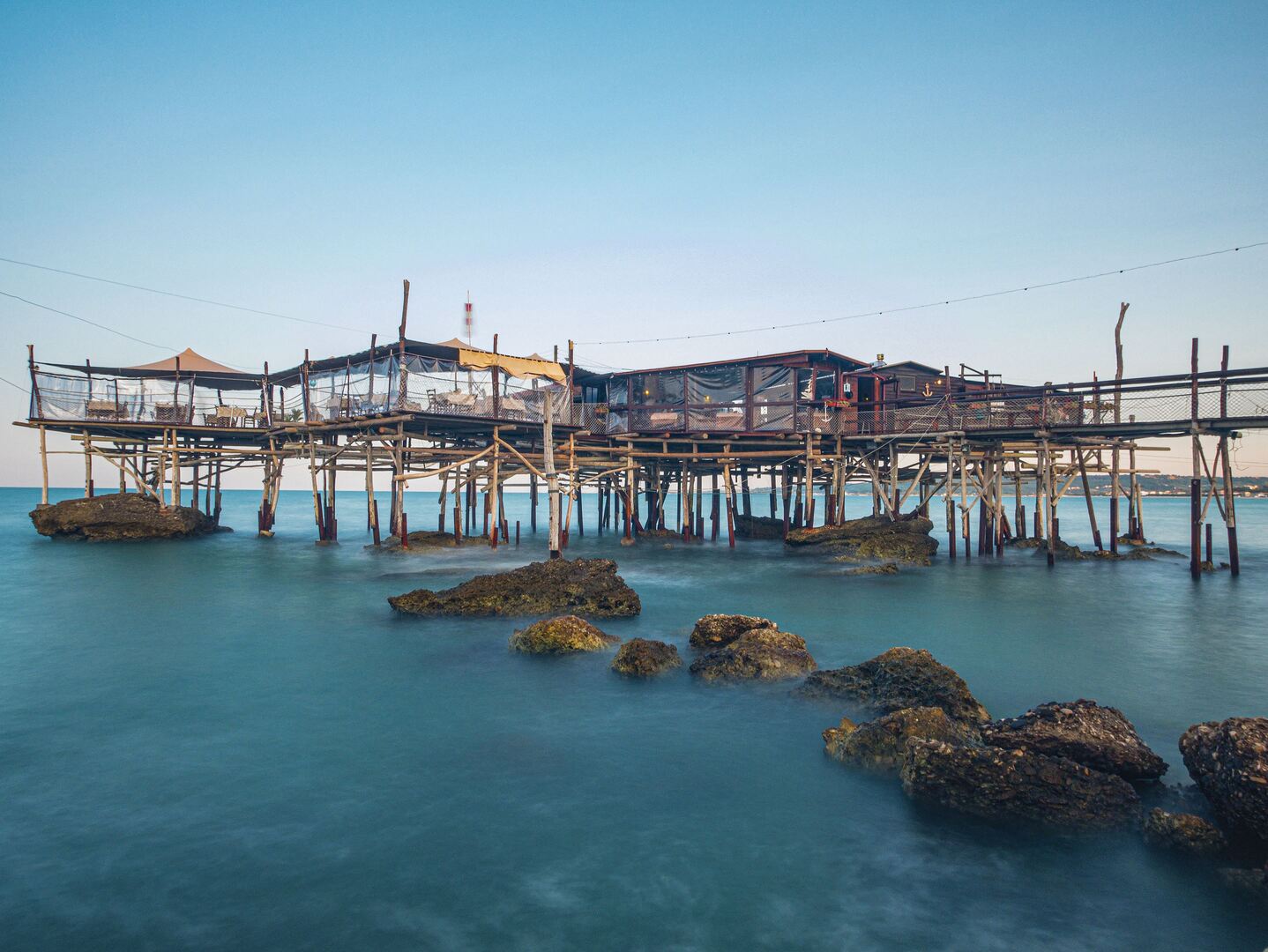
On the trabocchi, unlike the paranze, it is still possible to go up and hear the wood of the gangways creak in their apparent fragility as they bend with the waves. And stop to talk to the surviving traboccanti, heirs of ancient dynasties, and listen to their stories, suspended in an ancient dimension.
“From the extreme tip of the promontory..., above a group of rocks a trabocco projected, a strange fishing machine, entirely made of planks and beams, like some giant spider... the huge fishing machine was made of stripped tree trunks, planks and hawsers … gleaming unique as the colossal skeleton of an antediluvian amphibian."
Gabriele D’Annunzio, Il Trionfo della Morte, 1894.

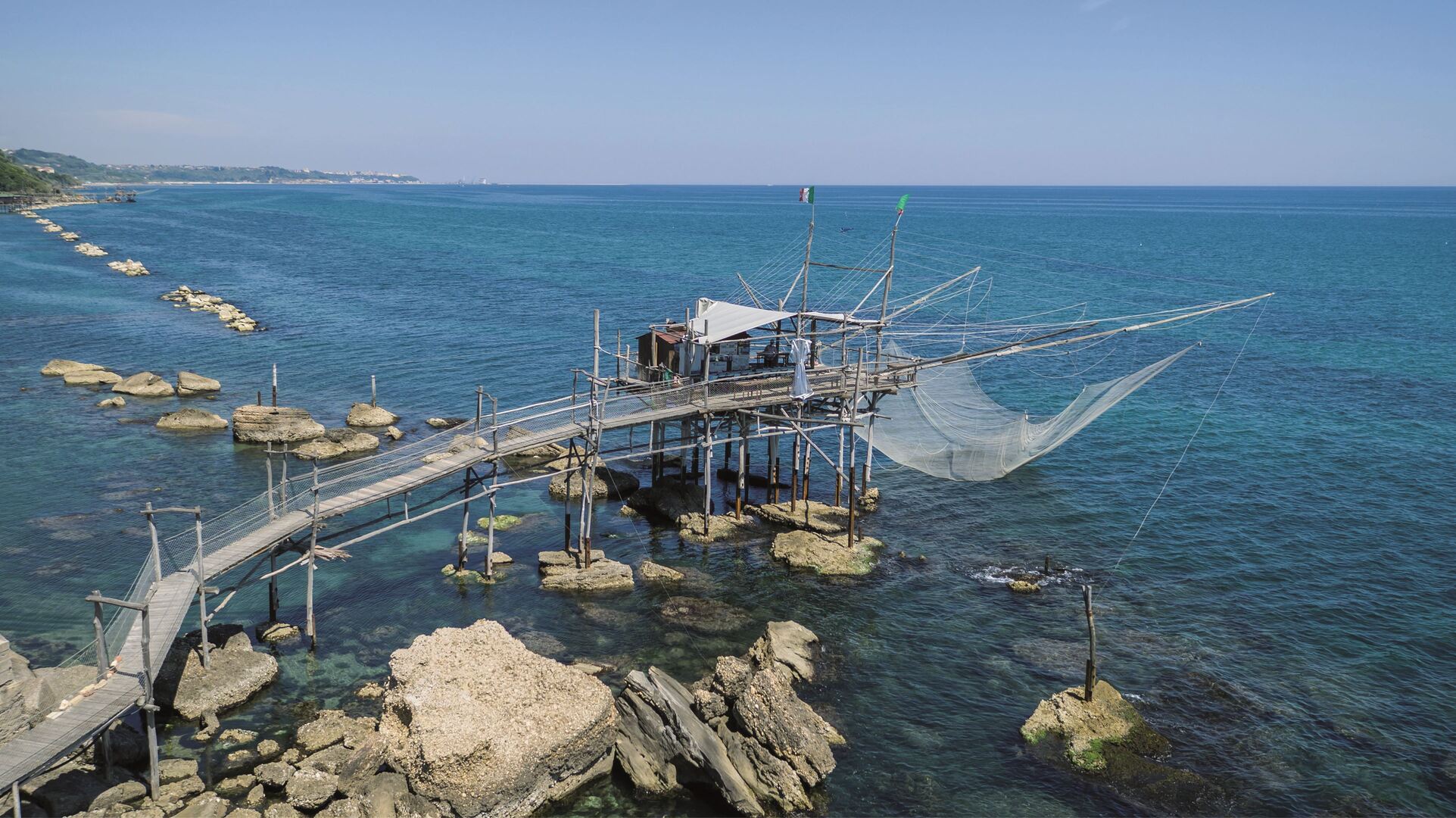
As it has to extend completely into the sea to ensure a minimum depth of water in which to lower the net, the trabocco can rarely be built on land due to the shallow Adriatic seabed. From dry land they are accessed along narrow, insubstantial walkways, also set on stilts.
Typical of coastal farming communities, the trabocco fully expresses the land culture of those who conceived and created them, these “sea peasants” who do not even get their feet wet to fish and who use the sea as an outright “liquid vegetable garden” which meets daily needs.
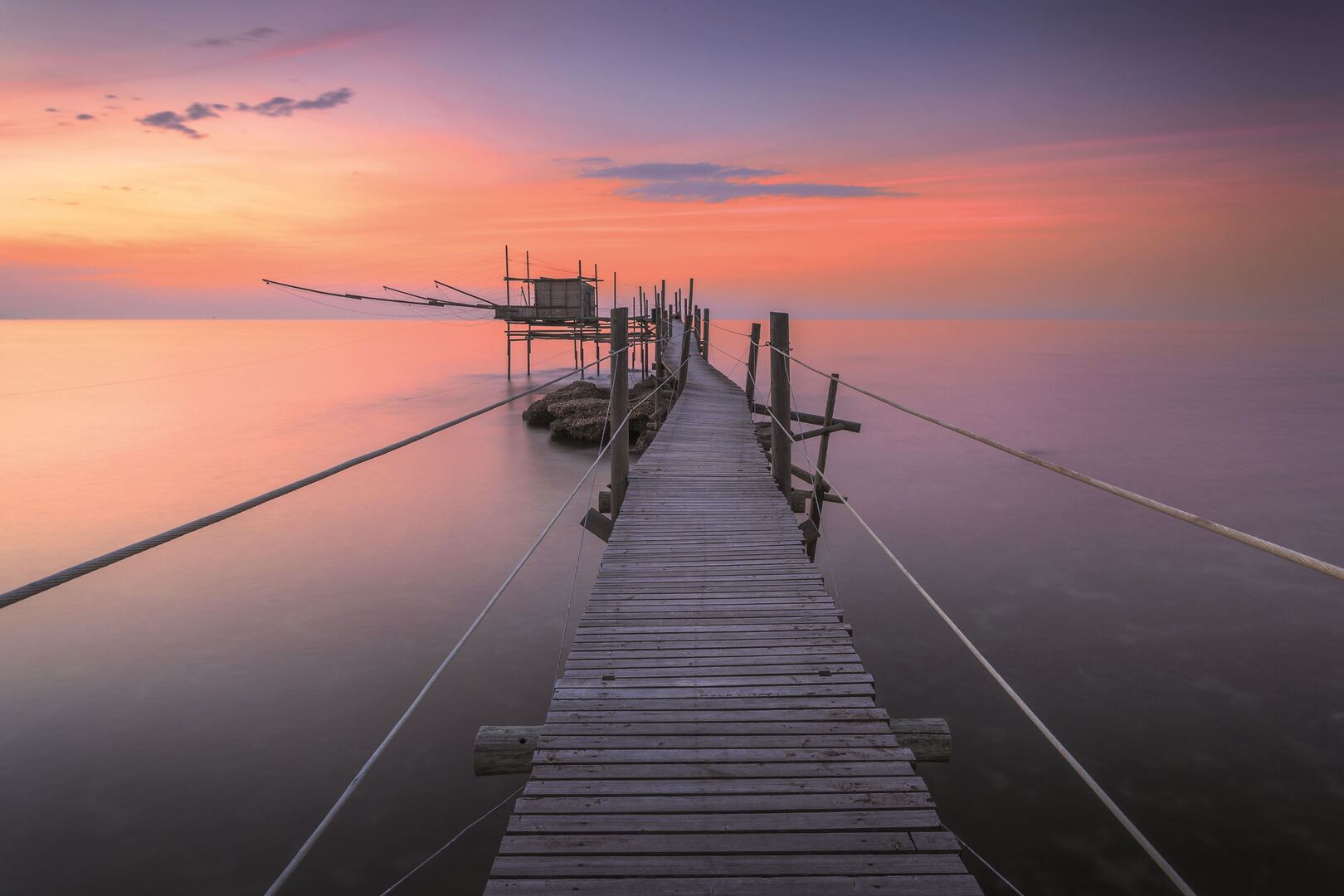
The story of the traboccanti, the name of the trabocco operators, venerable families who hand the platform down from generation to generation, also seems to reinforce symbolically how opposing life systems can cohabit.

Unfortunately, the earthquake and subsequent tsunami that devastated the Frentano coast in 1627 erased every trace of this ancient precedent, causing a profound geomorphological change. The tragic seismic event, which caused around 17,000 deaths, was then followed by several waves of plague (1630–59), causing impoverishment and depopulation of the beaches.
The trabocco we see today underwent various modifications, taking shape in the mid-1700s, when deforestation and clearing of uncultivated land began between San Vito and Fossacesia, and wooden scaffolding was built to allow timber to be loaded onto Venetian coasting ships.
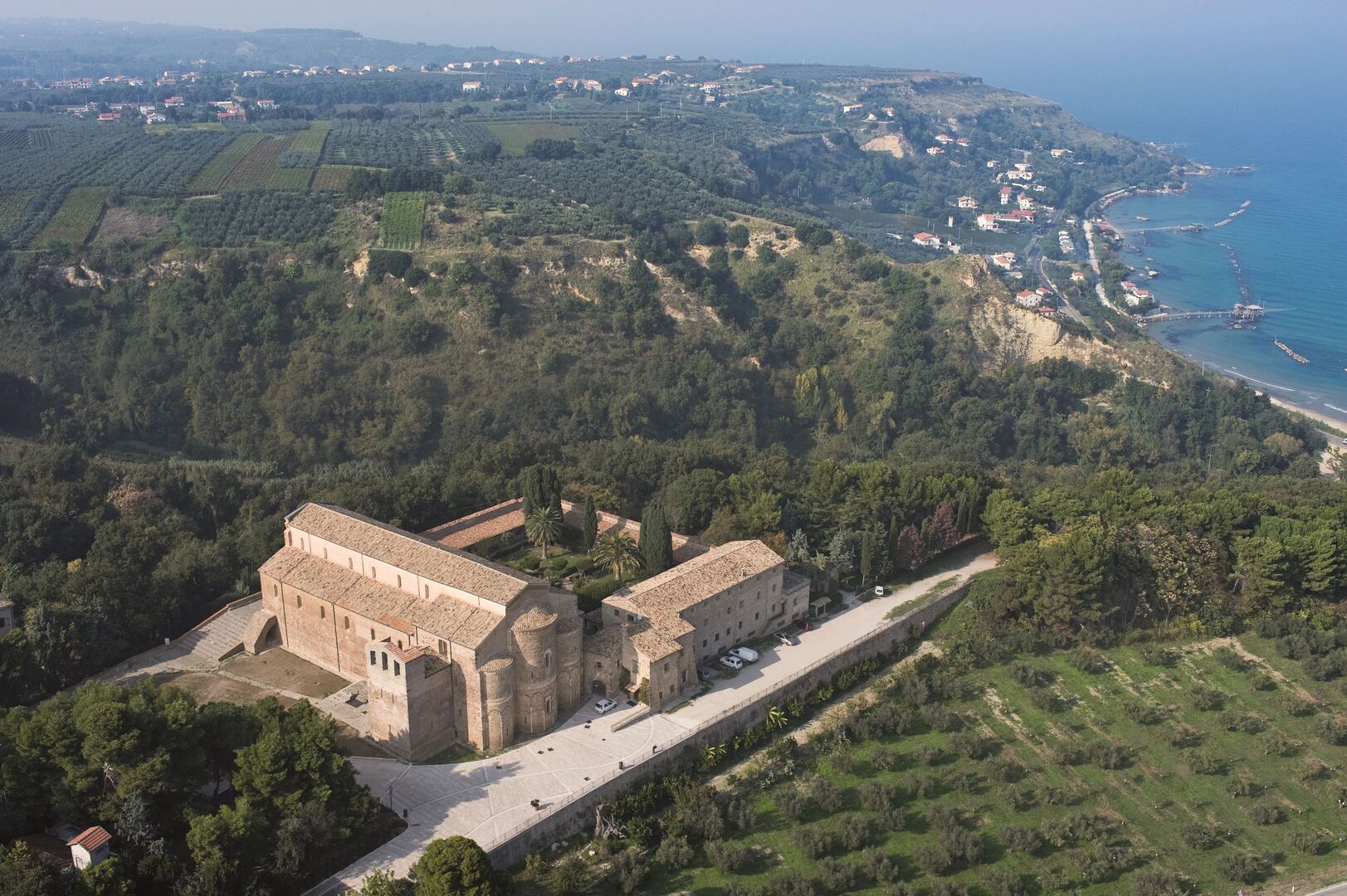
They were among the most accomplished trabocchi builders, and even today their story is passed down orally: “seme minute da la Frange dentre a ‘na botte” (we can from France in a vessel) making it clear they arrived by sea.
The newcomers who settled with their families on the lands received as property or in perpetual use, went on to adapt the trabocchi and used them to fish during the periods of inactivity of working the fields.
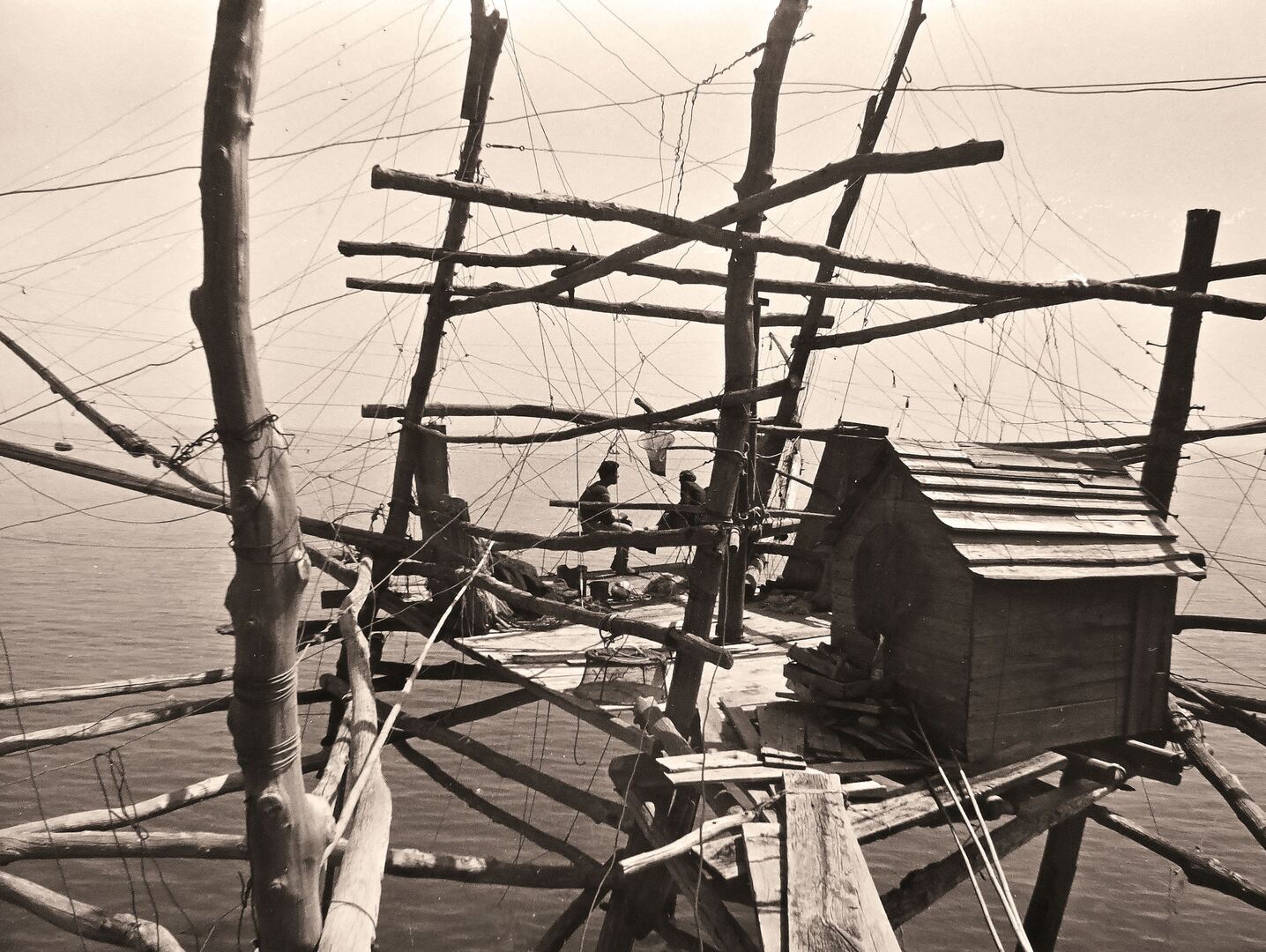
The skill of the two traboccanti winch operators lies in quickly lifting the trap to catch grey mullet, sea bass and sea bream, and passing bluefish. Likewise, the term trabocco seems to derive from the ancient Provençal “trabuc”, which indicated a device for making someone fall into a trap; hence the diminutive “trabuquet” or trabocchetto, the term now used to identify these networks of structures.
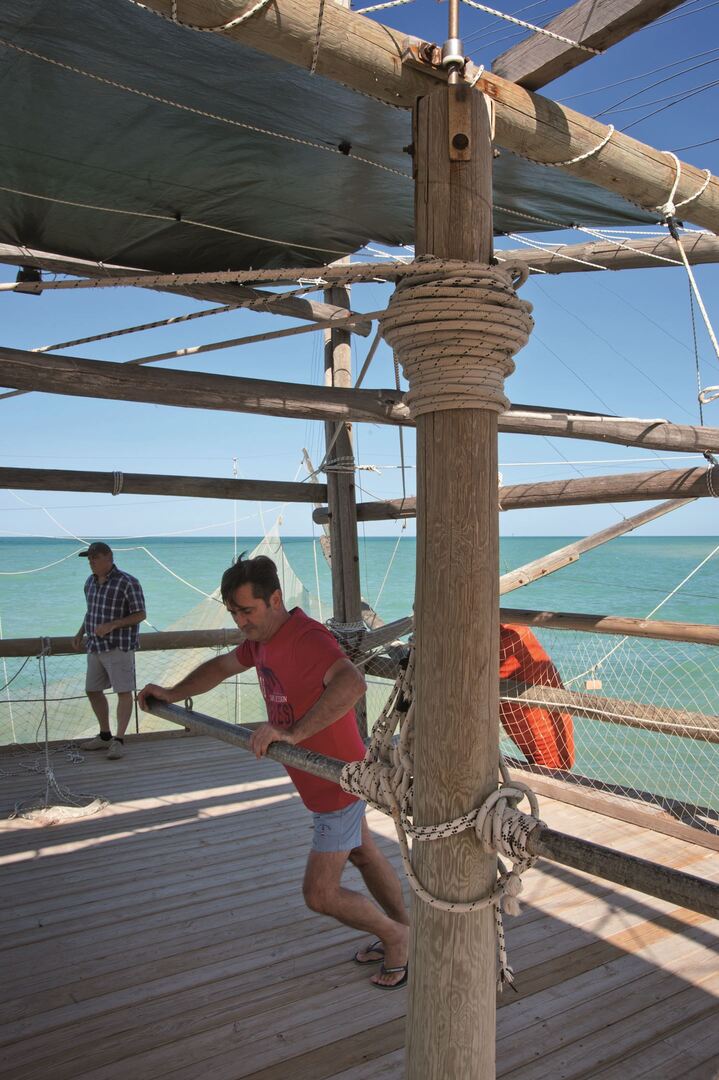
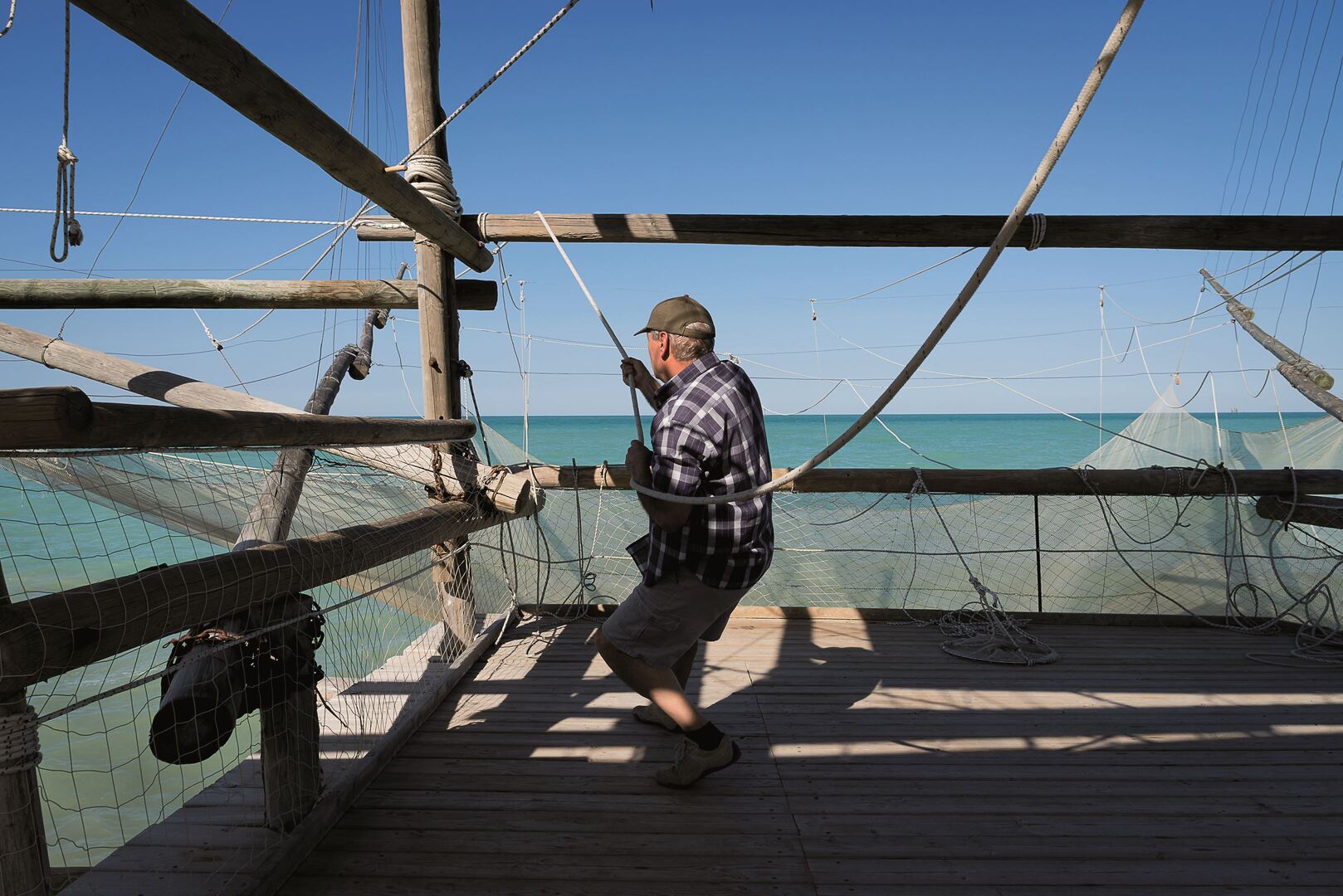
The railway company planted Robinia or Spiny Acacia on the slopes subject to landslides. This Rapidly growing weed tree species from Australia gave hard robinia wood, used for beams and pillars due to its straight trunk. It offered superior performance compared to the oak and holm oak previously used and tolerated the salt air very well.
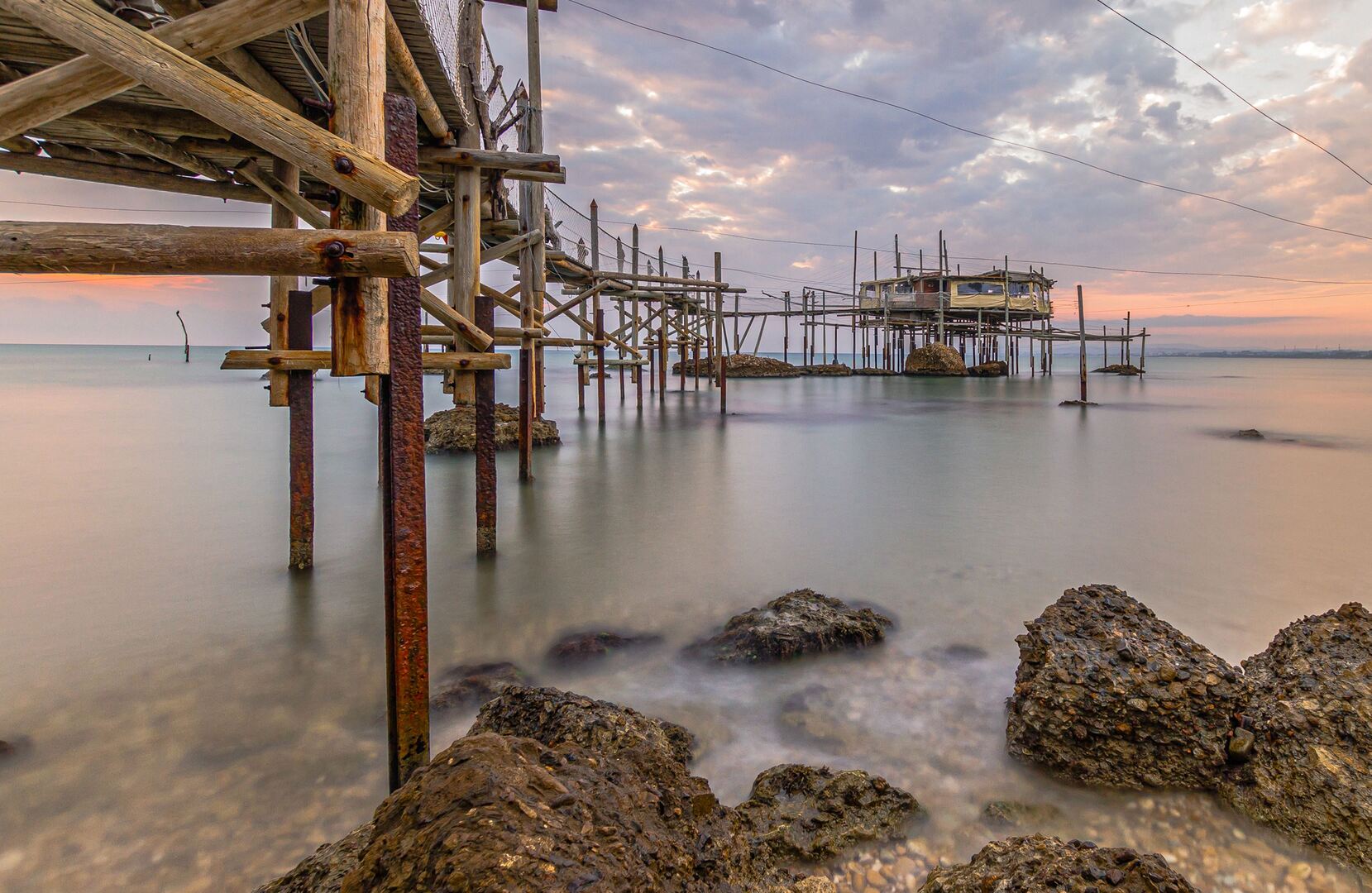
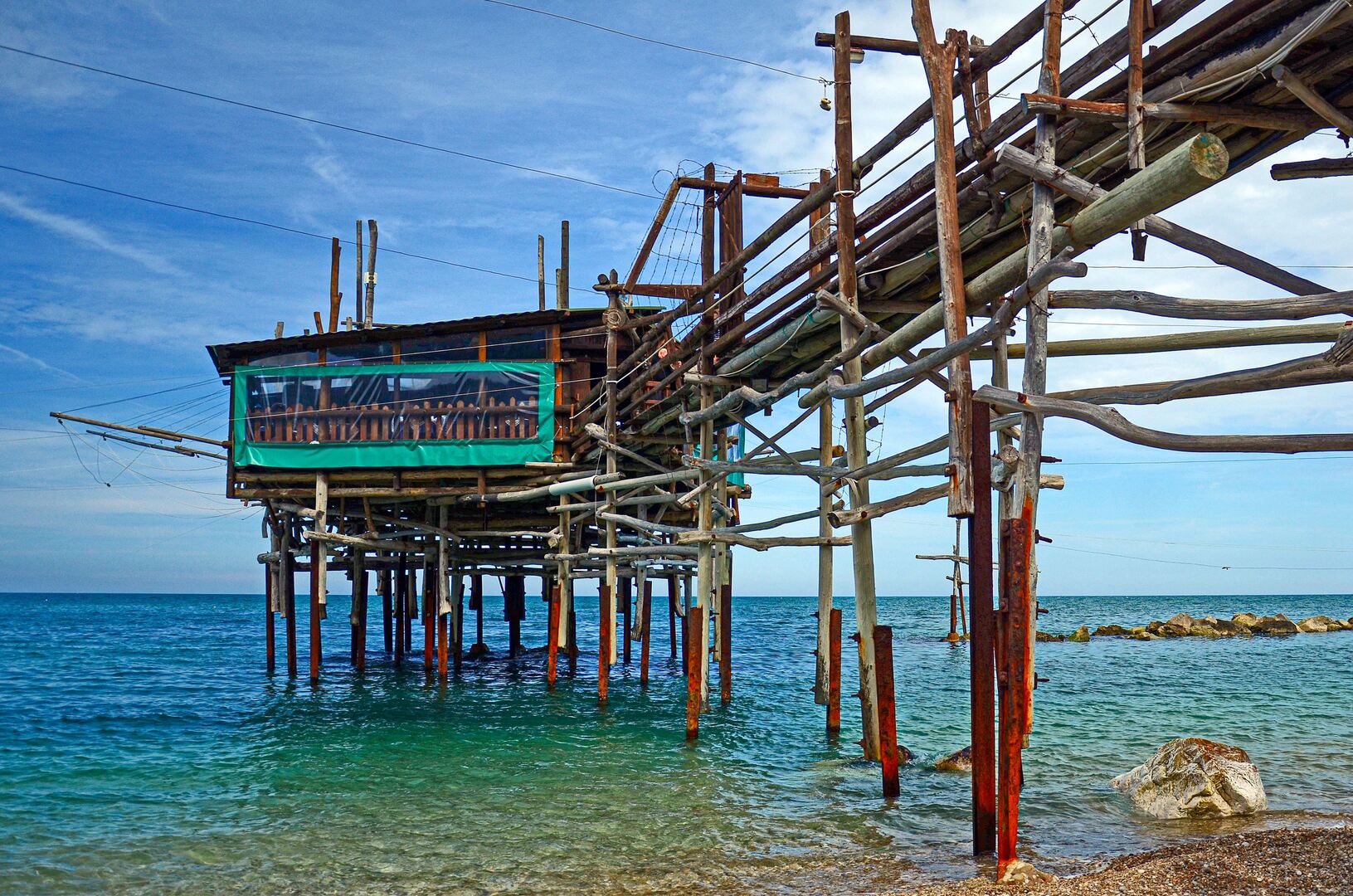
Once again, the ancient custom of recovering materials, typical of peasant populations, together with the inventive ability of these artisans, breathed life and substance into a new, more advanced fishing machine, which has come down to us today.


A recent regional law has regulated the recovery and promotion of Abruzzo’s trabocchi to safeguard the fishing part for pleasure and demonstration purposes, as well as to encourage the consumption of local fish.
The trabocchi are an iconic legacy of the Abruzzo coast, to be preserved and handed down as witnesses of a peculiar culture which derives its originality from the mix of fishing but also artisan and peasant knowledge.
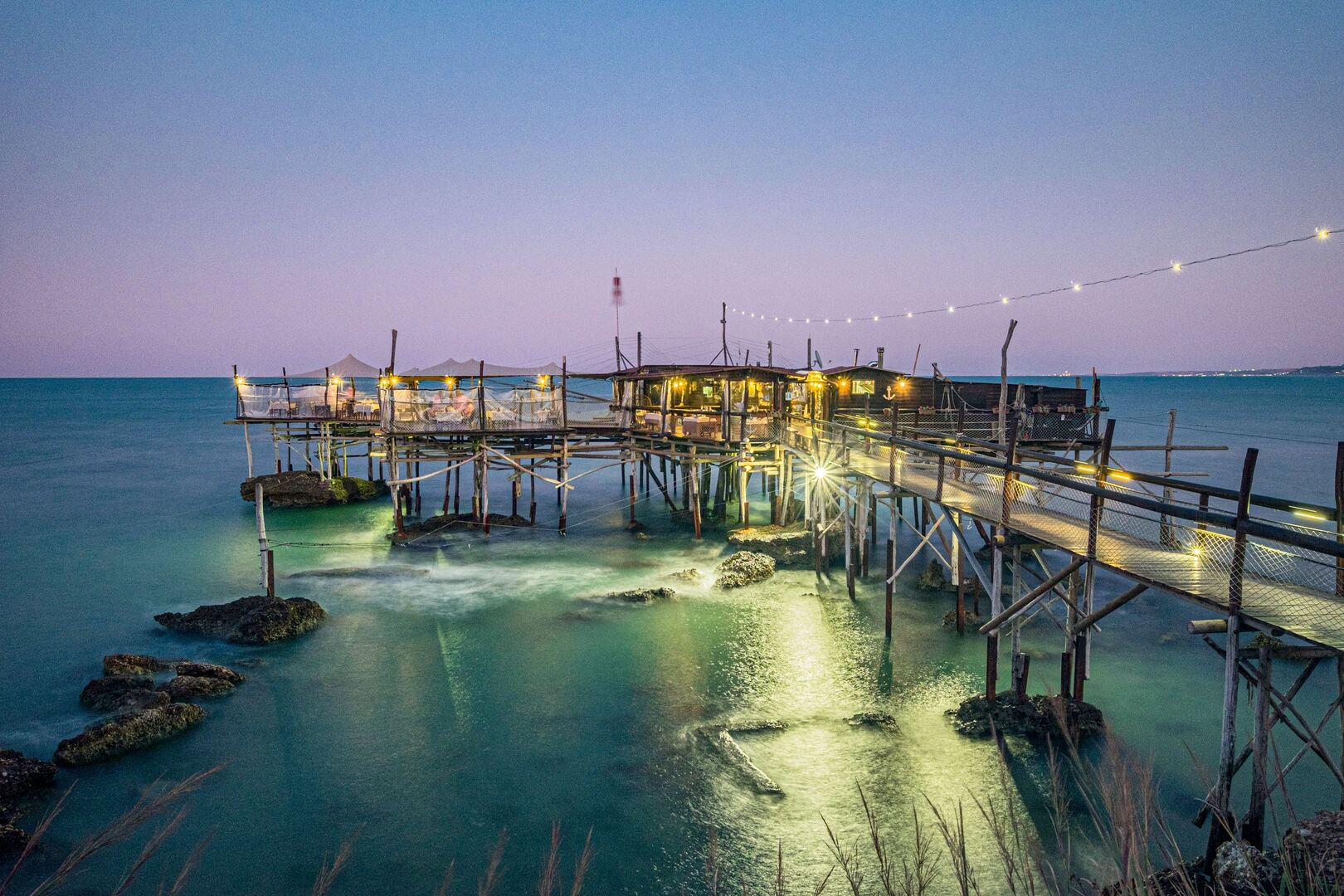
Trabocchi Maps
Discover them by clicking on the highlighted locations
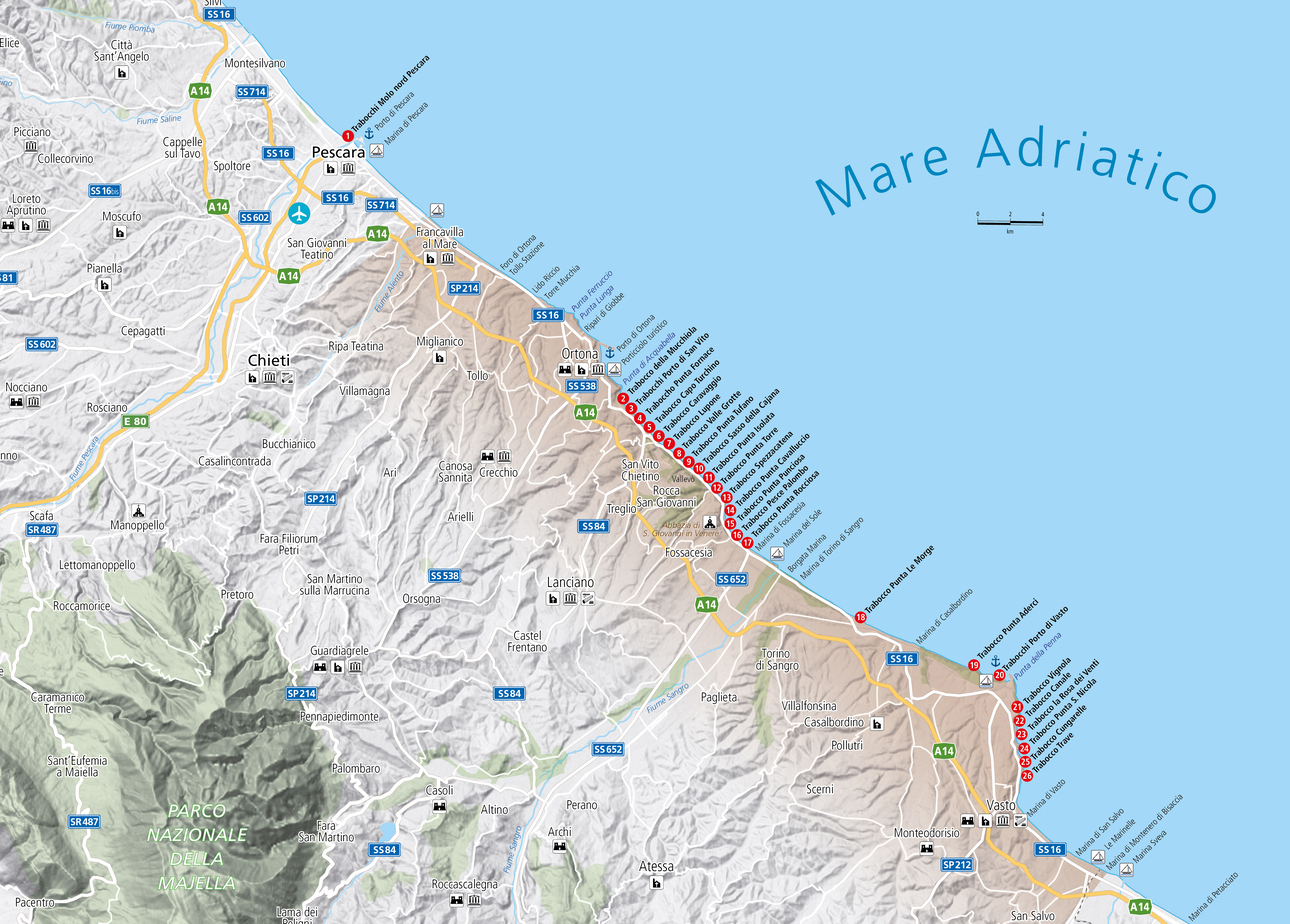
Sviluppato da Microware s.r.l.

www.microwareitalia.com